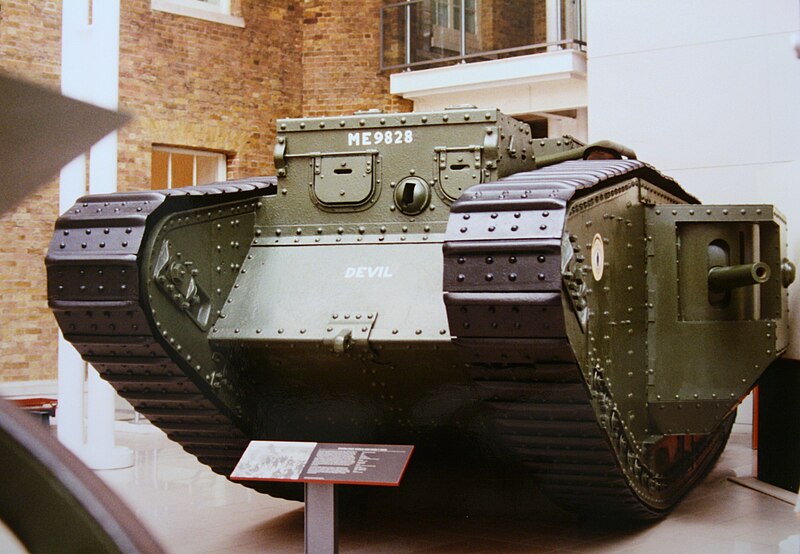Innovative Weapons of World War I

As of the writing of this article, a few people are alive today during World War I (WW1). For example, Maria Branyas is, as of May 2024, 117 years old. That said, it is hard to imagine what life was like for soldiers and civilians during that time, but we know that many of the innovative weapons of World War I significantly impacted subsequent wars.
World War I saw many innovations, and while not everything in this list was designed or built specifically for the period, they were used, and some even gained their popularity thanks to their contributions.
Claude Choules was the last surviving World War I veteran until he passed away in 2011 when he was 110 years old. That is how long-ago World War I was, but here we are, still discussing it, and in this article, we will be discussing what weapons we think had a significant impact on the war.
Unfortunately, we cannot speak about all the weapons used, and perhaps we have missed one or two that you would have liked to see included. However, please leave your opinions on our social media, as we love reading your thoughts. Let’s get into it:
Submarines
Submarines played a significant role in WW1, the German U-boats were particularly successful in disrupting allied supply lines and commerce, particularly in the Atlantic Ocean. German U-boats conducted unrestricted submarine warfare, sinking merchant ships and naval vessels without warning, resulting in heavy losses while threatening Britain’s ability to sustain its war effort.
The use of submarines also led to the development of anti-submarine warfare tactics and technologies, such as:
- Depth charges
- Sonar
- Convoy Systems.
Allied navies implemented convoy escort missions to protect merchant ships from submarine attacks while naval patrols and anti-submarine vessels hunted U-boats in the open ocean.
The impact of submarines on World War I cannot be understated, shaping the course of naval warfare and influencing maritime strategy in subsequent conflicts. The threat posed by submarines forced naval powers to adapt their tactics and invest in countermeasures to protect their fleets and merchant convoys.
Wireless Telegraphy
Wireless telegraphy (radio communication) was a groundbreaking technology. The first war it was used in was the Anglo-Boer War between 1899-1902. The technology, as its name would suggest, allowed for transmitting messages over long distances without the need for physical wires, using electromagnetic waves to carry signals through the air. This innovation revolutionised communication, enabling real-time contact between distant locations.
Although wireless telegraphy was in its infancy at the outbreak of World War I in 1914, military commanders recognised the importance of rapid and reliable communication on the battlefield, and it was used by various military forces, including the British Army, to facilitate communication between headquarters, frontline units, and reconnaissance aircraft.
Wireless stations were established behind the lines to intercept and relay messages, providing commanders with critical information about enemy movements, artillery fire, and logistical needs; essentially, it improved command and control capabilities, enhanced situational awareness, and facilitated coordination between different branches of the military.
Today, radio communication is part of our everyday lives. Still, much of the groundwork for modern military communication systems and civilian telecommunications infrastructure can be attributed to the development and use of wireless telegraphy.
Livens Projector
The Livens Projector was developed during World War I (1916) as a sizeable mortar-like weapon capable of launching canisters filled with toxic gas or high explosives over long distances. An officer in the Royal Engineers designed it, Captain William Howard Livens. The Projector provided a means of attacking enemy positions from a distance, supplementing traditional artillery barrages and offering a method of delivering chemical agents or explosives with greater precision and range than conventional artillery.
The British Army deployed the Livens Projector. It consisted of a tube buried in the ground, with a canister containing the payload inserted into the tube and propelled into the air by a controlled explosion. Multiple projectors could be grouped together to saturate a target area with gas or explosives.
Tanks
The deployment of tanks during World War I significantly impacted the course of the war, helping to break the stalemate of trench warfare and pave the way for Allied victories. Tanks demonstrated the potential of armoured vehicles on the battlefield and shaped the future of military technology.
Engineers from various countries, including France, Britain, and Germany, independently developed tank prototypes during the war. The first operational tanks, such as the British Mark I, were deployed by the British Army during the Battle of the Somme in 1916, marking a turning point in military technology.
Tanks were used to crush barbed wire, traverse trenches, and provide mobile fire support for infantry assaults. While British tanks were notable, other countries also made significant contributions to tank development and deployment.
Throughout World War I, tank designs evolved rapidly, with armour, firepower, and mobility improvements. Variants such as the French Renault FT and the German A7V demonstrated different approaches to tank design, influencing future generations of armoured vehicles.
The principles of combined arms tactics, where tanks work in coordination with infantry and artillery, continue to be central to military strategy today.
We recently published an article discussing significant British Tanks throughout history; be sure to read through that one
Machine Gun Nests and Pillboxes

The introduction of modern machine guns, such as the Maxim and Vickers guns, transformed the battlefield during World War I. They could deliver devastating firepower and were quickly incorporated into defensive strategies.
Military engineers on both sides of the conflict constructed machine gun nests and pillboxes to fortify defensive positions along the frontlines. They were typically built with reinforced concrete or thick walls and were equipped with gun ports for machine guns or rifles.
Machine gun nests and pillboxes were strategically positioned to provide overlapping fields of fire, covering approaches to key objectives such as trenches, supply depots, and communication lines.
Planes
At the outbreak of World War I, aeroplanes were still in their infancy, primarily used for reconnaissance missions to gather intelligence on enemy positions and movements. However, as the war progressed, their role expanded to include aerial combat and tactical bombing.
All major powers involved in World War I developed and deployed aircraft for military purposes. Early aircraft were often fragile and unarmed, but as the war progressed, technological advancements led to the development of specialised fighter planes and bombers.
Aircraft developed to fulfil various roles. Early efforts at reconnaissance were hugely successful, so aircraft were developed to counter the reconnaissance effort, and also to protect the reconnaissance aircraft, and thus the ‘fighter’ was borne. Early attempts at ground attack led to the evolution of dedicated bomber types that further enhanced the role of the fighters that became crucial to achieve air superiority.
Fighter planes engaged in dogfights to gain air superiority, while bombers targeted enemy positions, supply lines, and infrastructure behind the lines.
The lessons learned from using aircraft in World War I laid the groundwork for modern military aviation. The principles of air superiority, close air support, and strategic bombing developed during the war continue to inform military tactics to this day.
Additionally, the technological advancements made during World War I paved the way for rapid progress in aviation technology in the following decades, including improvements in engine design, aerodynamics, and weaponry, laying the foundation for the development of faster, more agile aircraft in the interwar period and beyond.
Final Thoughts
Reflecting on the innovations of World War I, it is crazy to think how these advancements continue to shape modern warfare and society. From the devastating impact of submarines on maritime operations to the groundbreaking developments in wireless telegraphy, each innovation left it’s mark on history.
Find out how ILS can help your business – Book an informal chat with Shaun
+44 (0)1952 671950
Your support engineering insights…
Register for the latest news, direct to your mailbox!



